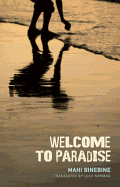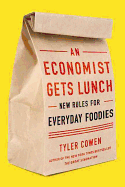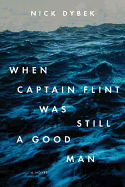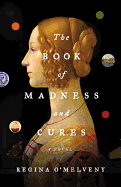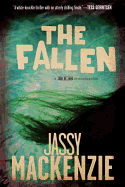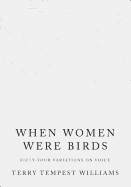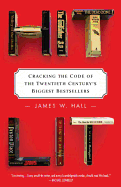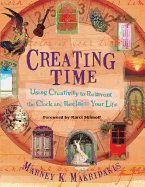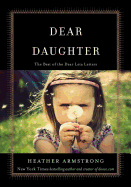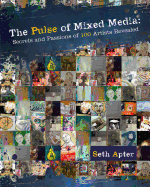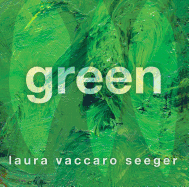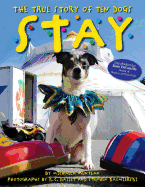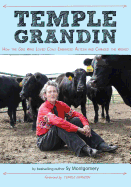Friday, April 20, 2012
There's been an outcry about the lack of a fiction Pulitzer Prize this year, with most booksellers bemoaning lost sales opportunities. Laurie Muchnick, in Bloomberg News, called the Pulitzer Board bumblers. Sig Gissler, administrator of the prizes, said, "It is not a statement about fiction in general--just a statement about the process." And the jurors agreed. Michael Cunningham said, "There's something amiss. They might want to look into that."
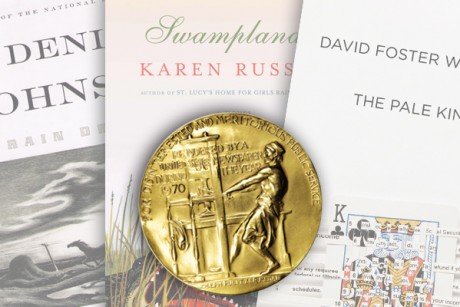 But perhaps, since there is so much news about the lack of a prize, with frequent mention of the three finalists--Swamplandia!, The Pale King and Train Dreams--all three books will get a boost instead of just one. And bookstores are figuring out ways to promote the three along with other worthy books.
But perhaps, since there is so much news about the lack of a prize, with frequent mention of the three finalists--Swamplandia!, The Pale King and Train Dreams--all three books will get a boost instead of just one. And bookstores are figuring out ways to promote the three along with other worthy books.
However, it's interesting to look at past winners and finalists.
The Pulitzer winners' list is made up of novels that have become part of current literary canon. In part:
Olive Kitteridge by Elizabeth Strout
The Brief Wondrous Life of Oscar Wao by Junot Diaz
The Road by Cormac McCarthy
Gilead by Marilynne Robinson
The Known World by Edward P. Jones
Middlesex by Jeffrey Eugenides
Empire Falls by Richard Russo
Interpreter of Maladies by Jhumpa Lahiri
But most finalists aren't as familiar:
The Bright Forever by Lee Martin
The Echo Maker by Richard Powers
After This by Alice McDermott
Shakespeare's Kitchen by Lore Segal
The Plague of Doves by Louise Erdrich
In Other Rooms, Other Wonders by Daniyal Mueenuddin
Love in Infant Monkeys by Lydia Millet
The Privileges by Jonathan Dee
Which begs the question: Is long-lasting prominence the result of the prize, or of the brilliance of the book? The prize spurs sales, which engenders word of mouth, which leads to more sales. Of course, popularity would soon wane if the book wasn't worthy. But bottom line: a Pulitzer would have been more than nice. --Marilyn Dahl, book review editor
Welcome to Paradise
by Mahi Binebine, transl. by Lulu Norman
As Mahi Binebine's Welcome to Paradise begins, Aziz and his shivering cousin are at a café in Tangier. The cousin has soiled himself in a fit of nerves, and the outraged waiter has just thrown them both out. They join other would-be illegal immigrants hiding on the beach, ready to cross the Strait of Gibraltar. Tonight is the night.
They've been waiting for a month at the little Café France, entertained by Momo the trafficker, a crook with an unusual gift for friendship who has learned to take no chances after spending three years in a French prison. We meet the people who have paid him for passage: Aziz, the young scholar who has failed his exam; Reda, his cousin, whose brother has had both his hands amputated, whose mother threw herself down a well; Nuara, clutching a baby who will not stop bawling, searching for a husband who has not returned; Kacem Judi, an Algerian teacher who has survived the butchery of his people; Pafadnam and Yarce, who have come from Mali with their life savings; and Yussef from Marrakesh, whose family are all dead.
In a spare, straightforward style, Binebine creates a compelling, all-too-human cast of characters ready to risk everything to get across the Strait. By the time they reach the last hours and prepare to attempt the dangerous crossing, the reader has come to identify intensely with their hopes and loves and fears.
The book's final stretches are agonizingly suspenseful, with a painfully believable ending that stays true to Binebine's heartbreaking commitment to his characters and his determinedly humanistic, profoundly touching vision. --Nick DiMartino, Nick's Picks, University Book Store, Seattle
Discover: A group of desperate immigrants in Tangier await a new life of freedom--or arrest and possible death.
When Captain Flint Was Still a Good Man
by Nick Dybek
Many of us have grown up riveted by images of the pirates of Robert Louis Stevenson's Treasure Island, from Long John Silver to the cutthroat Captain Flint who ruthlessly silenced the crew who helped bury his treasure. With a title that pays homage to Stevenson and his tales of the sea, Nick Dybek's first novel takes place on an island just a ferry ride from Seattle, where young Cal narrates the story of those who make their living from the cold waters off Alaska.
The hardy men of Loyalty Island bear the missing limbs, stoic reserve and strained marriages of a life half-worked on dangerous crab boats and half-lazed away mending nets and painting boats back home. The island is a company town where the Gaunt family owns everything, down to a piece of the profits from every crab and fish brought to port. When second-generation owner John Gaunt dies, his profligate heir, Richard, comes home intending to sell the company to the Japanese, take his personal treasure and leave the island families to fend for themselves. Somebody has to do something.
Along with obvious references to Stevenson's Treasure Island and Kidnapped, Dybek's story of young men and their distant fathers and lonely mothers unfolds against a background of modern movies, music and the existential novels of Camus and Walker Percy. As such, When Captain Flint Was a Good Man is as much an atmospheric novel of morality and ambiguity as it is a sharply observed and plotted mystery--a novel for a new generation searching for understanding and adventure in the enigma of the sea. --Bruce Jacobs, founding partner, Watermark Books & Cafe, Wichita, Kan.
Discover: A novel about the complex lives of Pacific Northwest families who make their living from the sea.
The Book of Madness and Cures
by Regina O'Melveny
Gabriela Mondini, a young woman living in 16th-century Venice, was taught the art of physick by her father, and before he abruptly left their home, she was allowed to treat female patients. Afterward, though, the local guild banned her from practicing medicine because of her gender. This is the premise driving Regina O'Melveny's debut novel, The Book of Madness and Cures.
At 30, bereft of her profession and still mourning the death of her lover, Gabriela tires of inactivity and her mother's demands to find a husband and start having children. She decides to go in search of her father, whose enigmatic letters stopped some time ago without explanation. She had been helping him with his magnum opus, The Book of Diseases, and she wants to continue the work, but not without her father. So she gathers provisions for an extended journey and, with her servants Olmina and Lorenzo, sets off in search of a man whose mental state--based on his final letters--is questionable.
The three follow clues in the letters as they traverse Switzerland, Germany, France, Scotland, the Netherlands and finally Morocco. Is Gabriella's father going mad and, wishing to spare her and her mother the sight of his diminishing powers, simply lost forever?
What the three find, and what they have lost, form the heart of the story. O'Melveny's meticulous research into Renaissance life throughout Europe turns the novel into a painless history lesson; her grasp of medical lore, herbs and potions of the era is an irresistible combination of alchemy, real medicine and witchcraft. --Valerie Ryan, Cannon Beach Book Company, Ore.
Discover: In Renaissance Venice, a young female physician sets out to find her father and to discover the reason for his flight.
Mystery & Thriller
The Fallen: A Jade de Jong Investigation
by Jassy MacKenzie
Private investigator Jade de Jong's biggest problem on her diving holiday in St. Lucia is her fear of the water--until her boyfriend, police superintendent David Patel, announces that he intends to go back to his wife. As if this devastating news isn't bad enough, Jade's scuba instructor is brutally murdered and she and David find themselves pulled into a complex murder investigation full of corruption and bizarre twists.
The Fallen, Jassy Mackenzie's third Jade de Jong novel, highlights a wide range of contrasts in its settings. Mackenzie builds suspense through her depiction of crime-riddled Johannesburg's greed and corruption; she also beckons readers to the beautiful beaches of St. Lucia, worth risking life and limb to protect, and offers characters willing to go to great lengths for what they believe.
The true gem of The Fallen is the electrifying plot. The pace is constantly swift, right up to the last page, and Mackenzie throws in appropriate clues throughout the course of the novel while still maintaining a high level of suspense and mystery. Some minor plot details, such as police neglecting to take a cell phone after frisking a suspect, may leave some readers a little quizzical, but the pace will quickly jerk their focus back to the story. (The ending, however, so forcibly sets up the continuation of Mackenzie's series that some readers may protest a lack of closure.) --Jen Forbus of Jen's Book Thoughts
Discover: P.I. Jade de Jong stars in an adrenaline-inducing thriller that takes readers from the beaches of St. Lucia to the streets of Johannesburg.
Food & Wine
An Economist Gets Lunch: New Rules for Everyday Foodies
by Tyler Cowen
Tyler Cowen offers a practical, informative and tasty guide to the basic economics of food, as well as how to get the most out of one's dining experience, whether in the home or out of it.
A passionate foodie, Cowen presents a simple premise: good food doesn't have to be expensive, and food snobbery won't make it taste any better. To illustrate his point, Cowen describes his experience shopping for and eating a variety of cheap, delicious foods in Nicaraguan roadside tamale stands and markets. The same experience can be had, Cowen claims, much closer to home. But before that can happen, consumers need to change their shopping routines and eating habits. A good place to start, he says, is in the aisles of an ethnic supermarket.
In one of the liveliest sections of the book, Cowen offers practical tips for finding good restaurants with excellent food. The best food to be found in restaurants, Cowen claims, is the food with which America excels--barbecue. Foodies will delight as Cowen describes barbecue in all its forms and variations in mouth-watering detail.
In the last third of this fast-paced and fact-filled treatise, Cowen turns his attention to overturning both conventional wisdom and current thinking about food as it relates to economics, the environment and health. No doubt this section will generate the most controversy as Cowen offers a spirited defense of agribusiness, which he claims has saved many more lives than it has destroyed, and debunks the value of locavorism, which he claims is often economically unsound. --Debra Ginsberg, author
Discover: Tyler Cowen offers a practical, informative and tasty guide to the basic economics of food as well as how to get the most out of one's dining experience.
Biography & Memoir
When Women Were Birds
by Terry Tempest Williams
Terry Tempest Williams (Leap, Refuge, etc.) approaches a very personal subject in When Women Were Birds. The opening scene sets the stage: Williams's mother, on her deathbed, directs Williams to her journals (of which the author was unaware). They turn out to be empty--and the rest of the book is a series of ruminations on this mystery.
Williams contemplates the meaning of a person's (or more specifically, a woman's) "voice," in the sense in which a writer might use the term and in its more literal sense. She contemplates mothers and daughters and the meaning of their relationship, sharing some of the traditions of her own family and of the Mormon faith in which she was brought up. She also shares anecdotes from her marriage, so that the book follows her (in nonlinear fashion) from her foremothers through her childhood and into the present. There are lots of women in this book, as well as lots of birds. Williams touches on serious topics--including abortion, environmental activism and ax murderers--but always with a respectful, quiet, lyrical tone.
Often as much poetry as prose, and full of lists, quotations and letters, When Women Were Birds is truly a tribute to several generations of the strong, inspiring and interesting women of Williams's tribe. It is a loving creation, showing all the musical, reflective intelligence we expect from Williams, and a lovely example of her own voice. --Julia Jenkins, librarian and blogger at Pages of Julia
Discover: Terry Tempest Williams's thoughtful, melodious meditations on the contents of her mother's journals.
Essays & Criticism
Hit Lit: Cracking the Code of the Twentieth Century's Biggest Bestsellers
by James W. Hall
What is a bestseller? How does it "work?" How do you write one? James Hall, known for his popular mysteries (Dead Last), answers these age-old questions in Hit Lit. Years ago, he started teaching a class about American bestsellers to see what he might come up with. The class became very popular and was offered regularly. With his students (including Dennis Lehane), Hall gradually came up with a list (or "code") of 12 elements or "features" all über-popular novels possess.
Hit Lit analyzes 12 books to demonstrate these keys to success, from The Da Vinci Code to Jaws, To Kill a Mockingbird, Peyton Place and The Godfather. These blockbusters "spring from a single purpose," Hall writes: "a desire to capture the uniqueness of the American story" with its inspiring traditions, bold idealism, violence, contradictory values and extraordinary characters. He also identifies 12 predominant elements in their stories, from "hot button issues" to "secret societies" to "mavericks" to "fractured families."
So if one could write a novel to these specs, it'd be a sure success, right? No: without the author's "feeling," a deep personal commitment to the story, it's just a "sterile exercise." (It's also got to be a page turner.) For some readers, Hall may be slightly reminiscent of the teacher in Dead Poets' Society who didn't rip out the introduction, but overall Hit Lit is an amusing and arguable book you can enjoy or dismiss. --Tom Lavoie, former publisher
Discover: A perfect parlor game for book geeks: What do you put into a hit novel? What do you leave out?
Psychology & Self-Help
Creating Time: Using Creativity to Reinvent the Clock and Reclaim Your Life
by Marney K. Makridakis
Marney Makridakis demonstrates to her readers that a calm, intuitive life of intention is not only possible but imperative: "On the practical level," she writes, "this book will help you to make tangible choices and changes about how you use and perceive time, while on the philosophical level, the tools are geared to work deeply within, unearthing new, uplifting beliefs and ideas about time and life itself."
Creating Time emerged when Makridakis contracted Bell's palsy after the birth of her son and the asymmetry of this disorder awakened her to the imbalance in other areas of her life: "I was never fully present in anything I was doing, existing as a partial person as I exhaustively chased time.... I became determined to apply my best resource (imagination) to my biggest problem (time)." The result is a creative workbook that helps readers become aware of where they spend their time, then shift this attention from external accomplishments to the internal energy and essence of the day in order to incorporate a sense of gratitude into each moment. One exercise, for example, involves pausing briefly every hour and giving thanks for something that occurred in the previous hour. Makridakis believes the more we are able to focus on the present moment, the less concern about time we will have.
Creating Time isn't just a self-help guide, it's also a luminous work of art--and would be a welcome gift to give or receive, as well as a refreshing and engaging choice for book clubs. --Kristen Galles from Book Club Classics
Discover: A practical workbook to help readers engage more fully in each day.
Parenting & Family
Dear Daughter: The Best of the Dear Leta Letters
by Heather Armstrong
What kind of a mother has the time to write a gushing love letter to her child every month? It's enough to make a normal mother feel like an abject failure. Can we take a book full of these letters seriously? When it's Heather Armstrong, we can.
Armstrong is no stranger to confession: Her website, dooce.com, gets more than 100,000 daily visitors, even giving us a new word ("dooced") for getting fired after complaining about your job on your blog. Her memoir, It Sucked... and Then I Cried, frankly revealed the battle with postpartum depression that landed her in the psych ward. After illuminating the truth about the loneliness of being a new mom, the upbeat Dear Daughter is a welcome change, and because Armstrong has been in the trenches we can take it as authentic. From another author, this book might give you a toothache--it's just so sweet--but you'll find yourself nodding along when Armstrong self-mockingly insists her offspring is the most exquisite child who ever lived, even when said daughter gleefully pees all over the couch. You'll laugh--and you'll cry, because you realize what Armstrong has been through to find this kind of joy in her daughter. Dear Daughter is a reminder of why anyone willingly becomes a parent... amid the heartbreak and sleepless nights, actively loving your child is a gift of unimaginable magnitude. --Natalie Papailiou, author of blog MILF: Mother I'd Like to Friend
Discover: Dooce.com blogger Heather Armstrong's precious collection of letters to her five-year-old daughter.
Art & Photography
The Pulse of Mixed Media
by Seth Apter
"Almost by definition, an artwork is the voice of the artist," Seth Apter writes, but what does that voice have to say? What secrets will it divulge? In The Pulse of Mixed Media, Apter, a mixed-media artist with a Ph.D. in psychology, goes beyond the immediate questions of how artists create their art or where they find inspiration. By focusing the main part of the book on 31 artists (26 of whom are women), Apter obtains an array of answers to in-depth questions that delve deep into the psyche of each of his subjects. Coupled with beautiful color photographs of their work, the responses provide an insight into the whole life experience of being an artist, not just the artistic side of it.
The answers are clustered around each question--such as "Is there an emotion that shows up more frequently than others in your artwork?" or "What is your most quirky habit?"--allowing readers to mull over each artist's response against the backdrop of the group and providing a reflection of the wider artistic community. The last section of the book expands the field to more than 100 different artists, offering readers a wider database of answers to such questions as "What expresses the innermost you?" and "What is your biggest fear?" Simulating photographs throughout The Pulse of Mixed Media create an virtual gallery tour for the armchair traveler, while Apter's psychology-based questioning leads to a comprehension of the artistic process rarely shared before now. --Lee E. Cart, freelance writer and book reviewer
Discover: Words and mixed media combine to offer insight into the artistic life and creative personality.
Children's & Young Adult
Green
by Laura Vaccaro Seeger
The simplicity on the surface of Laura Vaccaro Seeger's (First the Egg) ode to the color green masks the planning and seamless execution of a series of intricately connected images.
She begins with a white rabbit in a thick grove of trees--"forest green"--and closes with a girl and her father admiring a majestic tree near a barn--"forever green." Two leaves sprout from the tree on the right-hand edge of that first image of the forest; two leaves sprout from the tree in that last picture with the barn. In the forest spread, those two leaf shapes are holes cut out of the pages and filled in by a deep green patch that shows through on the following page, where a turtle swims in a pool of "sea green." In the sea-green ocean, those leaf-shaped holes now outline a pair of fish. Seeger suggests that each piece of art tells its own story, but also that together they contribute to a larger narrative about nature.
She raises themes for conversation: the "never green" of a stop sign versus a "no green" winter landscape. Children know this snowy scene will be green before long. With the turn of a page, the full moon, looking like an extension of the snowman pictured, becomes a sun that shines on a boy planting a seedling. Could that boy have grown up to be the father with his daughter on the final page? Seeger gives us a meditation on nature's gift for keeping us in the moment and its constancy through the ages. --Jennifer M. Brown, children's editor, Shelf Awareness
Discover: A Caldecott Honor artist's series of interconnected images form a whole that mirrors the cycle of life.
Stay: The True Story of Ten Dogs
by Michaela Muntean, photos by K.C. Bailey and Stephen Kazmierski
This book had us at "stay." The cover portrait of a Jack Russell terrier adorned with a sequined ruff, bookended by the primary-colored toes of giant clown shoes, could not telegraph the contents better.
Raised in a family of circus performers whose lineage can be traced to the early 1800s, Luciano Anastasini was a famous juggler and acrobat by age 12. Then one day he fell 50 feet off a high wire, ending his physically demanding career. What could he do? Luciano knew no other life but the circus. Then he got an idea for an act--a dog act: "Luciano would be getting a second chance. Perhaps he could give some dogs a second chance, too." We meet Bowser, a beagle mix that could steal food even from inside cabinets, and Penny, a small white bichon frise with a happy smile and the bizarre habit of spinning in circles and running into walls. Each of the 10 canines profiled seemed to have an insurmountable issue. Yet the book's clever design hints at their bright futures. Clear, realistic photographs capture the dogs' personalities and contrast with a text framed by candy colors, and their names festooned with polka dots.
For more than two years, Luciano, with enormous patience, empathy and love, discovered each one's special talents. He observed what the dogs enjoyed doing and found a way to work that into his act. This celebration of second chances lets us know that, just as these dogs were rescued, it was the circus performer who was actually saved. --Lisa Von Drasek, librarian at Bank Street College of Education's School for Children
Discover: A joyful photographic true story of a circus performer who discovered that each abandoned dog has special gifts, including love.
Temple Grandin: How the Girl Who Loved Cows Embraced Autism and Changed the World
by Sy Montgomery
In her exceptional biography of Temple Grandin, Sy Montgomery tells Grandin's life story and explains autism to young readers.
As Montgomery leads readers through Grandin's school years, she emphasizes both her subject's path to overcoming the limitations of her disability and the gifts that autism brought her. Two gifts in particular--understanding animals and a passion for invention--eventually combined when Grandin began designing environments to improve the lives of feed animals (those raised to be killed for food). While still in college, Grandin fixated on inventing a more humane cattle chute. The narrative aims to increase empathy and understanding about autism in all readers, and to provide support and advice to those on the spectrum themselves. Between biographical chapters, short sections appear such as: "Autism Disorder: A Few Fast Facts," "Thinking Differently: Changing Views of Brain Differences" and "The Abnormality of Genius." The introduction and appendix ("Temple's Advice for Kids on the Spectrum") come directly from Grandin herself. Grandin innately understands what causes animals fear, and is fearless herself in advocating for them. Color and black & white photographs are interspersed with Grandin's schematic drawings of her inventions.
Sy Montgomery is known for her books about animals, from middle grade series standouts Kakapo Rescue and Saving the Ghost of the Mountain (both part of Houghton Mifflin's Scientists in the Field series) to popular adult titles The Good Good Pig (Ballantine, 2006) and Birdology (Free Press, 2010). Temple Grandin's life is a natural subject for her, and Montgomery's take will open the eyes of adults and young readers alike. --Angela Carstensen, school librarian and blogger
Discover: The biography of an extraordinary woman who embraces the gifts of autism in a life spent advocating and working for animal welfare.
| Advertisement Meet belle bear! |


